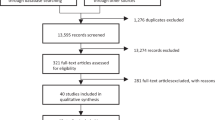Abstract
Evaluation of the efficacy of antidepressant agents needs to take into account factors which increase the “effect size”, such as dosage, treatment duration, the use of two-phase trials, and pattern analysis of responders. Although many patients are thought to receive inadequate doses of antidepressants, relatively few dose-response studies have been performed. However, trials of both tricyclic antidepressants and phenelzine have shown that statistically significant improvements in outcome result from the use of higher dosages; the length of treatment may also affect results. In some studies, the proportion of patients showing a clear-cut response increased significantly among patients treated with active drug instead of placebo when the treatment period was extended from 4 to 6 weeks, independent of the dose used. There may thus be a distinct advantage in extending trials of antidepressants for a minimum of 6 weeks. Two-phase drug trials can be used to extend the trial period still further in responding patients, to emphasise the contrast between treatment and placebo effects and to eliminate type-2 errors. Twelve-week trials might increase the statistical power of the evaluation by 10–20%, in studies where the drug effect size is small. Pattern analysis of the timing and duration of patients' responses has been shown to aid the distinction of true responses from non-specific or placebo effects, and may be useful for evaluating data from studies of antidepressant agents which yield ambiguous results.
Similar content being viewed by others
References
Bridges PK (1983) Point of view. Br J Psychiatry 142:676–687
Brodgen RN, Heel RD, Speight T (1981) Trazadone: a review of its pharmacological properties and therapeutic uses in depression and anxiety. Drugs 21:401–420
Cohen J (1977) Statistical power analysis for the behavioural sciences. Academic Press, New York
Dunlop SR, Dorn, Seif BE, Wernicke JF (1990) Pattern analysis shows beneficial effect of fluoxetine treatment of mild depression. Psychopharmacol Bull 26:173–179
Jue SG, Dawson GW, Brogden RN (1982) Amoxapine: a review of its pharmacology and efficacy in depressed states. Drugs 24:1–23
Keller MC, Klerman GL, Lavori PW, Fawcett JA, Coryell W, Endicott J (1982) Treatment received by depressed patients. JAMA 248:1848–1855
Ketai R (1976) Family practitioners' knowledge about treatment of depressive illness. JAMA 235:2600–2603
Quitkin FM, Rabkin JG, Ross D, McGrath PJ (1984) Duration of antidepressant treatment. Arch Gen Psychiatry 41:238–245
Quitkin FM, Rabkin JG, Stewart J (1986) Study duration in antidepressant research: advantages of a 12 week trial. J Psychiatr Res 20[3]:211–216
Quitkin FM, Rabkin JG, Markowitz JM (1987) Use of pattern analysis to identify true drug responders: a replication. Arch Gen Psychiatry 44:259–264
Ravaris CL, Nies A, Robinson D (1976) A multiple dose controlled study of phenelzine in depression-anxiety states. Arch Gen Psychiatry 33:347–350
Remick RA, Barton JS, Patterson B (1983) On so-called treatment resistant depression. Presented at 51st Annual Meeting, Royal College of Physicians & Surgeons of Canada, Quebec City, Sept. 1982. In: Ayd FJ (ed) International Drug Therapy Newsletter, 18, No. 7
Schatzberg AF, Cole JO, Cohen BM (1983) Survey of depressed patients who failed to respond to treatment. In: Davis JM, Maas JW (eds) The affective disorders. American Psychiatric Press, Washington, DC
Simpson GM, Lee JH, Cuculica AA, Kellner R (1976) Two dosages of imipramine in hospitalized endogeneous and neurotic depressives. Arch Gen Psychiatry 33:1093–1102
Tyrer P, Gardner M, Lambourn J, Whitford M (1980) Clinical and pharmacokinetic factors affecting response to phenelzine. Br J Psychiatry 136:359–365
Watt DC, Crammer JL, Elkes A (1972) Metabolism, anticholinergic effects and therapeutic effects of outcome in desmethylimipramine in depressive illness. Psychol Med 2:397–405
Author information
Authors and Affiliations
Rights and permissions
About this article
Cite this article
Quitkin, F.M. Methodology of measuring the efficacy of antidepressants. Psychopharmacology 106 (Suppl 1), S87–S89 (1992). https://doi.org/10.1007/BF02246244
Issue Date:
DOI: https://doi.org/10.1007/BF02246244




